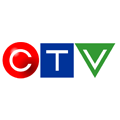- As more than half of Americans claim they’re not getting enough sleep, the new TikTok wellness trend “sleepmaxxing” gains popularity. It utilizes multiple methods to assist people in achieving the longest, most restorative sleep.
- While many tactics have long been known to work, others have experts raising concerns that they may do more harm than good.
- Experts also said that this trend might result in an obsession with achieving quality sleep, which could actually make it more difficult to fall asleep.
Full story
Are you getting enough sleep? More than half of Americans said they aren’t, according to Gallup. But now, a new TikTok trend called “sleepmaxxing” aims to help people live the dream.
What is ‘sleepmaxxing?’
“Sleepmaxxing” utilizes tips and tricks to get longer, more restorative sleep.
Influencers on TikTok have touted several “hacks” to help people hit the hay, from tried-and-true techniques to tech trends.
What works?
Among the popular TikTok “hacks” are tips that sleep experts have long recognized as effective, such as creating a consistent schedule and adhering to it. This means waking up and going to bed at roughly the same time each day — even on weekends.
Another suggestion is to sleep in a cool, dark and quiet room, which can help individuals wake up bright-eyed and bushy-tailed.
Experts also said limiting your screen time and exposure to bright light before bed are key. They also recommended to avoid drinking alcohol or caffeine a few hours before bedtime.
What are some popular TikTok sleep ‘hacks?’
Additionally, TikTok influencers have suggested other methods, some of which experts say could worsen sleep.
Sleep tracking apps have gained popularity through TikTok. While these apps can be a good way to monitor factors impacting rest, they can also be a distraction and negatively impact how individuals think they’ll sleep before dozing off.
Some sleep experts have recommended using weighted blankets. They said while the blankets can create a sensation of being cuddled or cocooned, they can also relax individuals to the extent that their cortisol levels — the hormone associated with stress — can fall low enough to disrupt their sleep.
Another thing TikTokers swear by for “sleepmaxxing” is red light exposure routines. Only a few studies have found an association between the practice and improved sleep. Others said it can make individuals feel more alert.
Some supplements can help people catch some shut eye, like melatonin, but using them consistently can mask a bigger sleep disorder issue that may need professional intervention.
How can individuals get their best sleep?
The bottom line is that experts said individuals should focus on the well-known essentials for good sleep and pay close attention to what does and does not work if they try something new.
They also said spending too much time worrying about getting the perfect amount of sleep can keep people up at night.




















